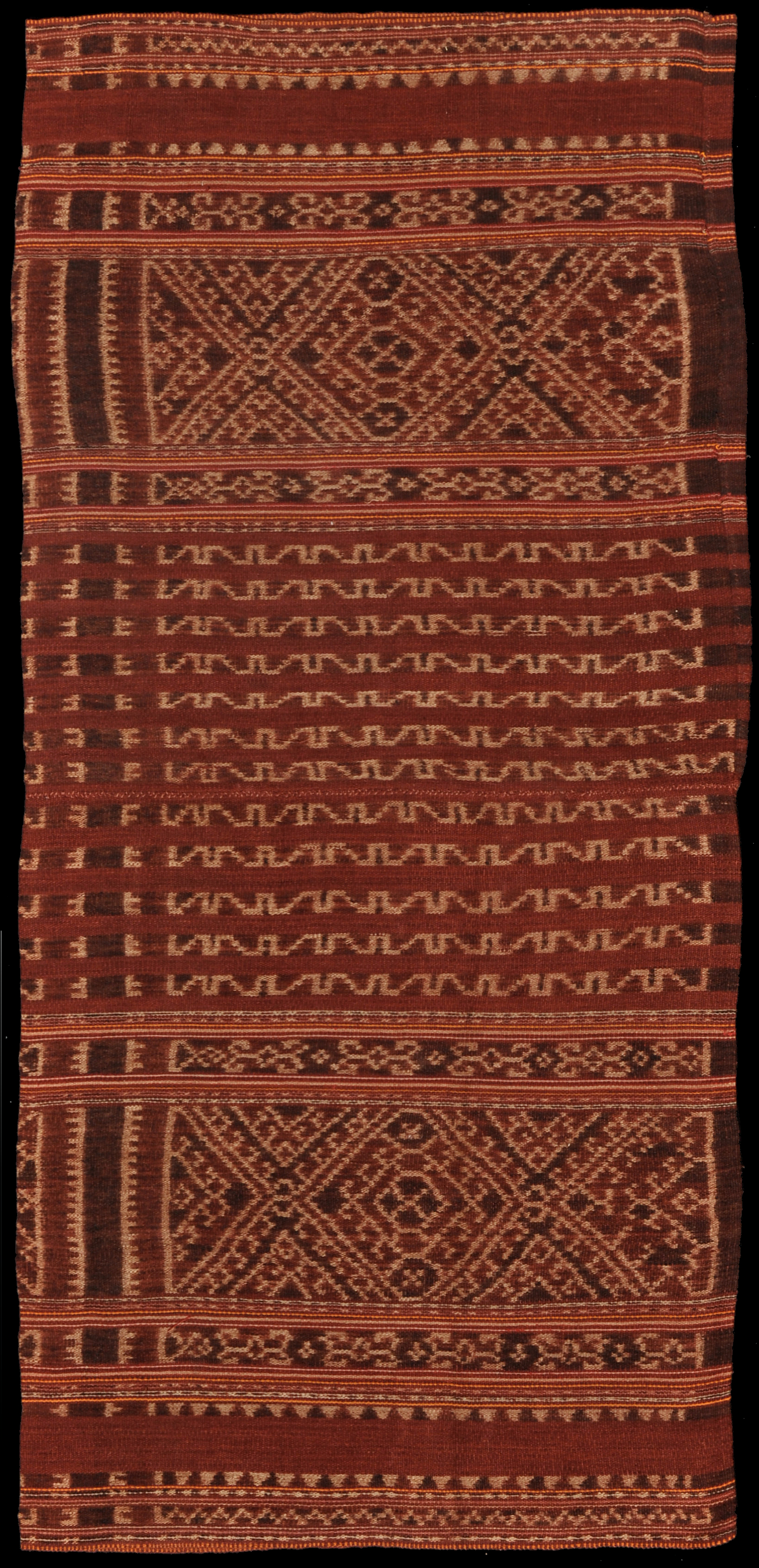| |
 mouse over to magnify mouse over to magnify
| | | | 221 Solor Archipelago, Solor
Kewatek (sarong)
| | Locale: | Western Solor, village unknown. Lamaholot people. | | Period: | 1930-1945 | | Panels: | 2 | | Design: | Kewatek méan, the highest ranking bridewealth sarong of Solor. Two wide bands with a large diamond flanked by two half diamonds, a pattern that was almost certainly patola-inspired. Midfield consists of twelve narrow bands with the belego, hollow of the knee, motif. Many parts of the pattern have been executed in belapit: morinda overdyed with indigo. According to the rules for this type of cloth on Solor (as in Ili Mandiri and Bama on Flores, across the strait), the weft was dyed morinda as well. Excellent saturation of the morinda. | | Size: | 64 x 134 cm (25.1 x 52.7 in) | | Weight: | 655 g (382 g/m2) | | Yarn: | Cotton, hand-spun, coarse | | Comment: | Very rare. In Without Cloth We Cannot Marry, Barnes writes that by 1982 'The proper red cloth had virtually disappeared and the lesser versions of bridewealth cloth had become an accepted gift instead.' Due to the scarcity of morinda root on the island, preparation of a cloth like this according to Barnes would take 'many years'. The deep colour saturation of this example means that it was made to impress. This is also communicated by the weaving, which, while very clear, is also fairly loose, showing off the morinda weft. Pinstripes, only one or two threads wide, in yellow, red and pale blue commercial cotton. The age of the piece is hard to define: it feels young, new, but microscopic inspection reveals wildly irregular yarn and 'organic' looking fabric structure seen almost exclusively in ikat from the early 20th c. and before. | | Background: | Additional information in chapters on Solor Archipelago and Solor. | | Published: | Ikat Textiles of the Indonesian Archipelago, 2018.
Ikat from Timor and its Outer Islands, 2022. | | Compare: | 321 | | Sources: | Very similar to early 20th C. kewatek mean in Ernst Vatter collection, depicted in Barnes, Ostindien im 20. Jahrhundert, Abb. 151. The diamond pattern, but much smaller and with more repeats is shown in Barnes, Without Cloth We Cannot Marry, Fig. 4. Field division, colour palette and centrefield patterning identical to kewatek shown in Gittinger, Splendid Symbols, Fig. 17. (Gittinger's example has a main motif in the endfields that is nearly identical to that in PC 221. Similar to kewatek with simpler design in the Yale Indo-Pacific Collection, donated by Robert H. Barnes, Nr. 001639. | | |
 ©Peter ten Hoopen, 2025
All rights reserved.
|
|


